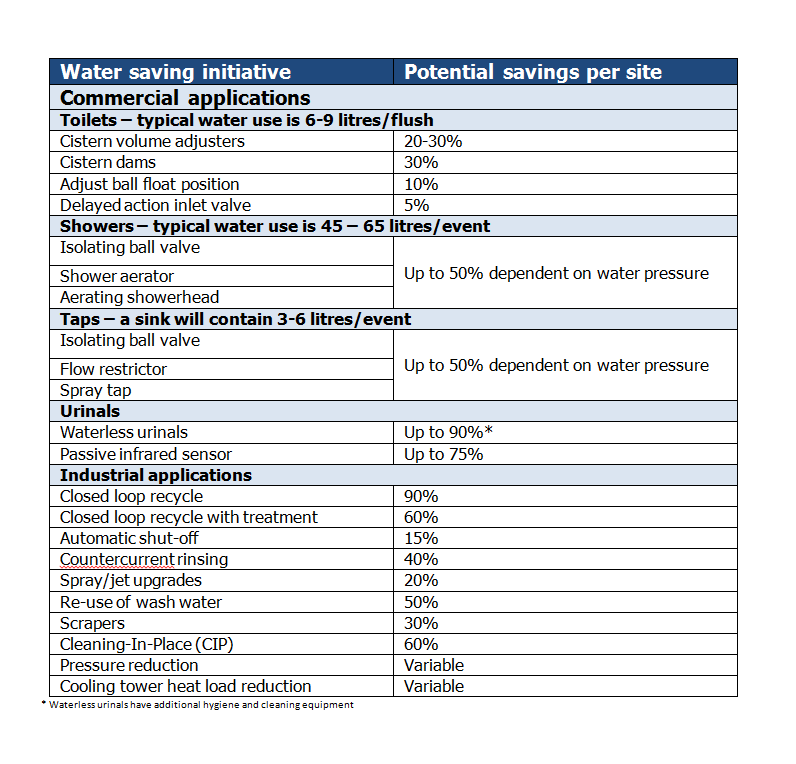The real cost of water supply and effluent (waste) disposal has risen by 40 per cent since 2002. Water costs your business twice – once for provision and again for disposal. Reducing the amount of water your business uses will save you money in supply charges and effluent disposal bills, and could also help you save on energy costs for heating or chemicals for water treatment.
Adopting a systematic approach to water reduction can typically result in around 30 per cent water savings if no measures have previously been implemented.
Below are some simple steps you can take to help save water.
| Opportunity | Overview |
|---|---|
| Stop dripping taps | A dripping tap can waste more than 5,500 litres of water per day. To help identify leaks and other water losses take meter readings last thing at night and first thing in the morning to ascertain how much water is being used outside working hours. Check your pipes and contact your water supplier to help locate leaks. The saving from tap maintenance or replacement may be worth the investment. |
| Fix pipe leaks | Pipe leaks can cause damage to your property and be expensive to repair. To help identify leaks and other water losses, take meter readings last thing at night and first thing in the morning so you know how much water is being used outside working hours. Remember to check your pipes and contact your water supplier who can help locate leaks. |
| Install water reducing kit in washrooms | A lot of water and money is flushed away; a toilet can use 9 litres per flush, and a wash basin 4 litres. Cistern dams, flow restrictors or percussion taps can all reduce water and costs. Consider installing taps that are self-closing or with infrared sensors; as well as reducing water use they can improve hygiene. Consider the cost benefit of procuring water reducing kit on site by site basis. Installing urinal flush controls typically saves around 70% of water used for flushing. Installing an aerator which costs around £6, on a conventional shower that is used twice a day for five minutes could save around £30 a year in water and sewerage costs |
| Regularly maintain water systems | Installing taps that are self-closing or with infrared sensors will reduce water use and improve hygiene. Regular maintenance of taps will ensure that soap deposits and scale don’t cause leaks or jammed taps. Showers should also be maintained to avoid blockages and reduce performance. |
| Lower your water pressure | A flow rate of 5-6 litres per minute is adequate for hand washing. To aerators and flow restrictions are low-cost solutions which can reduce water use by up to 70% |
In an office environment, typical major uses of water in include urinal and WC flushing, canteen water use, and cleaning. It is these areas of water use when the largest water savings can be achieved. The following table identifies savings that can be achieved by implementing water reduction initiatives.
Typical achievable reductions in water use at commercial and industrial sites

